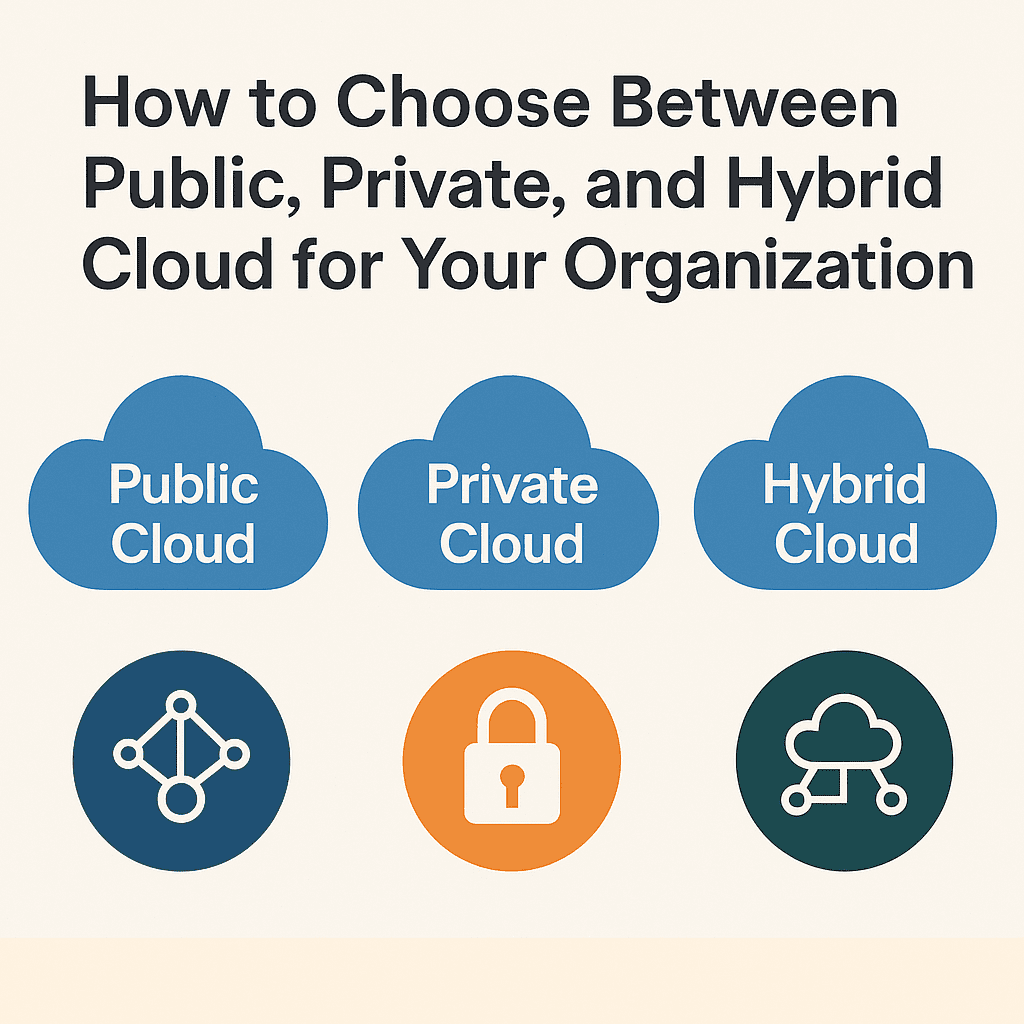In today’s digital-first economy, the right cloud strategy can be the difference between staying competitive and falling behind. With public, private, and hybrid cloud options available, understanding their strengths, limitations, and best use cases is essential for making the right decision for your business.
1. Public Cloud: Agility at Scale
What it is:
A public cloud is owned and operated by a third-party provider, delivering computing resources like servers, storage, and applications over the internet.
Best for:
Businesses seeking cost efficiency and on-demand scalability.
Companies with fluctuating or unpredictable workloads.
Advantages:
Low upfront costs – pay-as-you-go pricing.
Virtually unlimited scalability.
No need to manage physical infrastructure.
Considerations:
Less control over infrastructure.
Possible compliance and security concerns for sensitive data.
Example scenario: A retail business scaling up resources during the holiday season without investing in permanent hardware.
Private Cloud: Control and Security
What it is:
A private cloud is dedicated solely to one organization, either hosted on-premises or by a third-party provider.
Best for:
Organizations with strict security and compliance needs.
Businesses with predictable, steady workloads.
Advantages:
Full control over data and infrastructure.
Enhanced customization to meet specific performance or compliance needs.
Stronger data privacy.
Considerations:
Higher upfront and operational costs.
More complex to manage internally.
Example scenario: A healthcare provider meeting HIPAA compliance while managing sensitive patient records.
Hybrid Cloud: The Best of Both Worlds
What it is:
A hybrid cloud blends public and private cloud environments, allowing data and applications to move between them.
Best for:
Companies needing flexibility for a mix of sensitive and non-sensitive workloads.
Businesses looking for cost optimization without compromising data security.
Advantages:
Flexible workload distribution.
Improved disaster recovery and business continuity.
Scalability combined with data control.
Considerations:
Can be complex to integrate and manage.
Requires skilled IT staff or managed services support.
Example scenario: A financial services firm running sensitive transactions in a private
cloud while using the public cloud for customer-facing apps.
Making the Right Choice
When deciding between public, private, and hybrid cloud, evaluate your organization’s needs in these key areas:
Security & Compliance – How sensitive is your data?
Scalability – How quickly do you need to adjust resources?
Budget – Are you prepared for capital investment or do you prefer operational expenses?
Workload Type – Are your workloads predictable or variable?
Final Thought:
Think of it like transportation:
Public cloud is like a bus—affordable, scalable, and shared.
Private cloud is like owning a car—more expensive, but fully under your control.
Hybrid cloud is like having a car and also using ride-shares when needed.
Choosing the right model is not a one-time decision—it’s a strategic move that should align with your business’s growth, technology needs, and security requirements.








